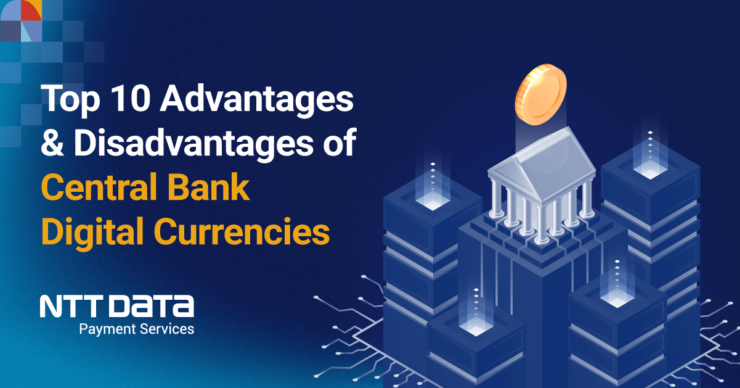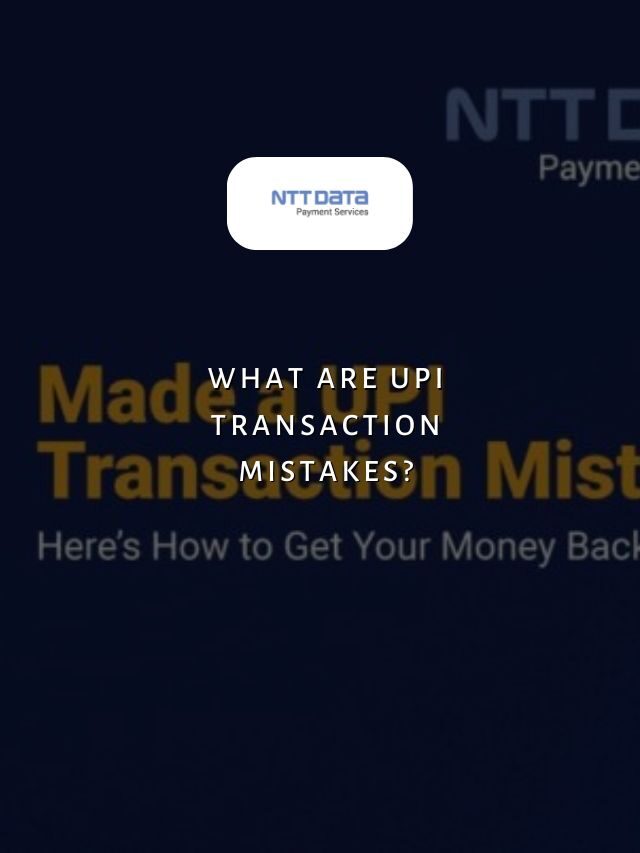
Table of Contents
Central Bank Digital Currencies (CBDCs) are the new buzzword in the world of finance. Imagine a world where you can make transactions with just a few clicks of a button, without the need for physical currency.
That is the future that CBDCs promise, but as with any new technology, there are both advantages and disadvantages to consider.
In this blog post, we’ll take a deep dive into the top 10 advantages and disadvantages of CBDCs.
From enhanced efficiency and financial inclusion to the risk of disintermediation and system instability, we’ll explore the potential impact of CBDCs on the financial system and the wider economy.
Keep reading to know more!
What are Central Bank Digital Currencies (CBDC) and how do they work?

Central Bank Digital Currencies (CBDC) are digital versions of a country’s national currency, issued and backed by the central bank. They resemble conventional fiat currencies but transactions are carried out digitally via a blockchain or other similar technologies rather than with actual money.
CBDCs operate through the use of digital wallets or accounts owned and managed by the central bank, commercial banks, or other authorized entities. CBDCs can be stored and transferred using digital wallets, just like online banking or mobile payment apps.
Recent Web Stories
Many countries have decided to establish their own CBDC in order to provide more reliable digital currencies that can be used as legal tender.
- The Bahamas was the first to establish a national CBDC called ‘Sand Dollar’.
- Nigeria is another country that launched eNaira in 2020.
- In April 2020, China became the world’s first major economy to test a digital currency, e-CNY.
Transactions can be completed in a CBDC system without the use of intermediaries like commercial banks or payment processors. This might lower transaction costs and boost efficiency.
Additionally, CBDCs can also promote greater financial inclusion because anyone with a digital wallet can use them, regardless of location or access to conventional banking services.
Top 10 Advantages and Disadvantages of IMPS Payment
3 Types of CBDC
There are generally three types of Central Bank Digital Currencies (CBDCs) that have been proposed or developed
- Retail CBDC: This kind of CBDC is similar to traditional cash in that it may be used to make immediate purchases and is meant for general public use. Digital wallets that are controlled by the central bank or authorized intermediaries can be used to access retail CBDCs.
- Wholesale CBDC: Wholesale CBDCs are designed to be used for interbank settlements and transactions by financial organizations including banks and payment processors. They can improve efficiency in the financial system and reduce the risk of settlement failures.
- Hybrid CBDC: This type of CBDC combines features of both retail and wholesale CBDCs. Hybrid CBDCs could be used for both consumer transactions and interbank settlements, creating a more efficient and integrated financial system.
Each type of CBDC has its own advantages and disadvantages, and the design of a CBDC system will depend on the specific needs and priorities of the central bank and the broader financial system.
Top 10 Advantages of CBDC
Here are the top 10 advantages of Central Bank Digital Currencies (CBDC)
- Increased efficiency of transactions: CBDCs could potentially streamline payment systems and reduce settlement times, enabling faster and more convenient transactions.
- Enhanced financial inclusion: CBDCs could provide greater access to financial services for individuals and businesses who are currently underserved by traditional banks.
- Better control of monetary policy: CBDCs could help central banks more effectively manage inflation, interest rates, and other macroeconomic indicators.
- Reduced costs for the central bank: CBDCs could potentially lower the cost of printing and circulating physical cash, as well as reduce the need for intermediaries in payment systems.
- Increased security and privacy for users: CBDCs could provide secure payments and a more private way to make transactions, reducing the risk of fraud and identity theft.
- Potential to stimulate economic growth: CBDCs could enable faster and more efficient payments, which could in turn promote economic activity and growth.
- Facilitation of cross-border transactions: CBDCs could make it easier and cheaper to conduct international transactions, reducing the need for foreign exchange conversions and intermediaries.
- Reduction of illicit activities: CBDCs could potentially reduce the prevalence of illegal activities such as money laundering and tax evasion, as all transactions would be recorded and traceable.
- Simplification of tax collection: CBDCs could simplify the process of collecting taxes, as all transactions would be recorded and easier to track.
- Integration with other emerging technologies: CBDCs could be integrated with other emerging technologies such as blockchain and smart contracts, potentially enabling new use cases and applications.
Top 10 Disadvantages of CBDC
Here are ten possible disadvantages of Central Bank Digital Currencies (CBDC)
- Potential for financial disintermediation: CBDCs could reduce the need for traditional financial intermediaries, such as banks, which could lead to job losses and a reduction in economic activity.
- Risk of bank runs and system instability: If there is a sudden surge in demand for CBDCs, it could cause a bank run and potentially destabilize the financial system.
- Need for infrastructure and technological investment: The implementation of CBDCs would require significant investment in technological infrastructure, which could be a significant burden for some countries.
- Vulnerability to cyberattacks: As with any digital system, CBDCs could be vulnerable to cyberattacks and hacking attempts.
- Possibility of breaching user privacy and creating a surveillance state: Depending on the design of the CBDC system, there is a risk that user privacy could be compromised or that the system could be used for surveillance purposes.
- Difficulty in implementing cross-border transactions: The adoption of CBDCs could be hindered by the difficulty of implementing cross-border transactions and regulatory harmonization across different countries.
- Possibility of exacerbating income inequality: If CBDCs are not distributed equitably, they could exacerbate existing income inequality in society.
- Lack of physical cash as a backup: CBDCs would rely entirely on digital infrastructure, which could be vulnerable to power outages and other disruptions.
- Difficulty in implementing anti-money laundering and counter-terrorism financing measures: CBDCs could be more difficult to monitor and regulate than physical cash, which could create challenges in preventing money laundering and terrorism financing.
- Potential for central bank overreach: Depending on the design of the CBDC system, there is a risk that central banks could use their power to manipulate the economy or make decisions that are not in the best interest of society.
Experience a new world of digital payments with NTT DATA Payment Services!
The concept of cashless societies implies the elimination of reliance on physical currency, such as notes and coins, for financial transactions. With a growing number of people embracing online transactions and digital wallets and a decline in ATM cash withdrawals, Central Bank Digital Currencies (CBDCs) offer a promising substitute.
NTT DATA Payment Services offers a complete payment solution to advance both your offline and online businesses. From online payment gateway and POS machine to IVR payments and Bharat QR Scan and Pay, we ensure maximum comfort, convenience, and safety for all your payments.
Conclusion
Central Bank Digital Currencies (CBDCs) have the potential to bring significant benefits to the financial system. However, they also come with a number of challenges and risks.
As a result, it is crucial for policymakers and stakeholders to carefully weigh the pros and cons of CBDC implementation and develop a comprehensive strategy that addresses these concerns.
With careful planning and effective management, CBDCs could play an important role in shaping the future of the financial system and driving economic growth and innovation.
| Also, you can get frequent updates on nttdatapayments Instagram page. |
Advantages and Disadvantages of CBDC: FAQs
1. Can I buy central bank digital currency?
Users will be able to conduct transactions with e-R using a digital wallet which some banks offer. Similar to cash, the CBDC will not bear interest and can be exchanged for other kinds of payment like bank deposits.
2. Do we need CBDC in India?
By avoiding the negative social and economic effects of private virtual currencies/Crypto Currencies, CBDCs will ensure consumer protection while offering the public the benefits of virtual currencies.
3. Is CBDC similar to Bitcoin?
No, it’s not. Bitcoin and CBDCs differ from each other in a number of ways. Bitcoin and other cryptocurrencies use public blockchains, whereas CBDCs use private ones. Unlike the latter, the former is centralized.
4. Who would benefit from CBDC?
Banks would be able to make payments more quickly and automatically if CBDCs were used. The speed and dependability of cross-border transactions may also increase.
5. How many countries are using CBDC?
As of now, a total of three countries have launched CBDC- China, Nigeria, and the Bahamas. India has currently started using digital currency in the wholesale sector (e₹-W).







